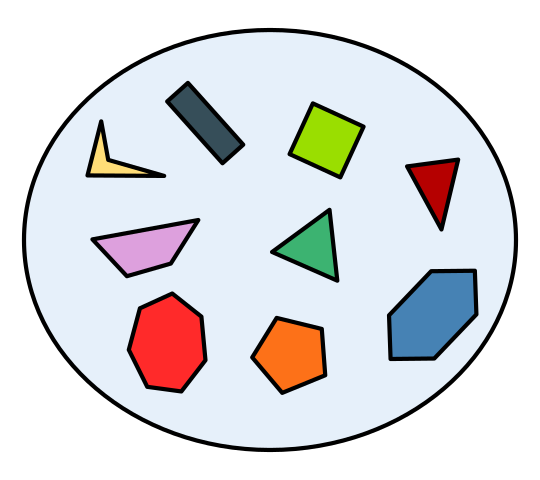Topic outline
-
In this course you will learn about:
- What makes up a set.
- Set notation.
- Types of sets and Combining sets.
-
A set is a collection of things. The "things" that are in the set can be made up of different objects. For example, a set of shapes or a set of pencils or pens. The things that make up a set are called elements or members.
The elements contained in the set shown below are shapes. In fact these are special shapes called polygons.

We use special notation, brackets and symbols to describe sets. That is what we discuss next.
-
In general we use capital letters to denote a set and curly brackets. For example, sets of polygons can be shown as: A={square, triangle, star, pentagon}, B={pentagon, diamond, trapezium}. The set A has 4 elements and set B has 3 elements.
The next video discusses more of the basics you need to know about sets.
-
Unions and intersections
You will notice that the shape 'pentagon' is found in both sets \(A=\) and \(B\) from the previous example. The repeated element in both sets is called the intersection and is shown using the symbol \(\cap \). We can represent this intersection using a Venn diagram.
You will also see the word 'union' used a lot in set theory. The concepts of unions, intersections and Venn diagrams are discussed in more detail in the next video.
-
-
There are some sets used so often in Maths that they have their own special names. Some of these special sets are shown in the table that follows.
Try the next exercise to test your knowledge on combining sets.
-
Practise combining sets
Click on the exercise Basic set notation to test your understanding of notation and combining sets. Note that when you see \(X\) \ \(Y\) this is the set of elements of \(X\) without the elements contained in \(Y\).
-